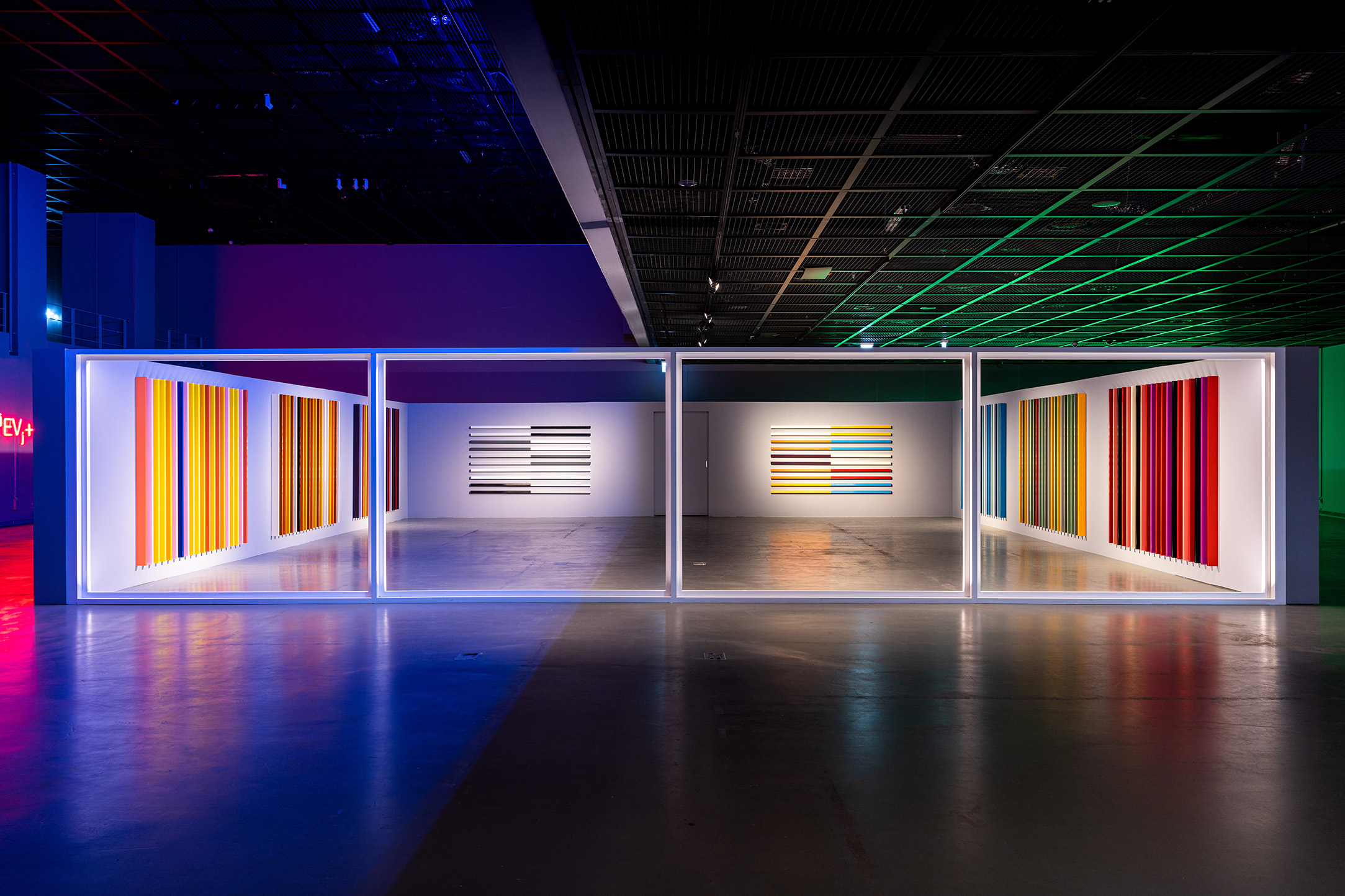Casey Kaplan

ON VIEW AT THE GWANGJU MUSEUM OF ART THROUGH JUNE 27, 2021
“The Work Life Effect” is Liam Gillick’s first major solo museum exhibition in Asia. The exhibition continues the artist’s interest in questions of production, various modes of work and an endless search for a contemporary abstraction. The title directly refers to this – alluding to the complex tensions between work and life. “The Work Life Effect” proposes a zone where we sense the effects of merging work and life, a process that has accelerated in the digital age and especially during the Covid-19 pandemic. The exhibition does not directly illustrate such processes; rather, it evokes a twilight mood of lights, forms and affects that bring forward how emotional and formal aspects of perception and experience are altered when we are subjected to new modes of mediated existence.
The exhibition suggests both exterior and interior spaces. In these zones we see large equations glowing on the walls, as if the analytical data surrounding us were visible – replacing the neon lights of a city at night with tools to calculate human happiness. Lights moving up and down operate as signs to the entrance of the exhibition – creating waves of shadows that move while we remain still. Two large architectural spaces are constructed inside the main room – with all other museum walls removed. They operate as semi-autonomous zones – neither within or without the museum itself. These two spaces within a space contain two paradoxical aspects of the artist’s work, namely abstraction in tension with a poetics of social life, experience and struggle. Both spaces resemble store fronts or enormous display cases. Brightly lit, they appear to have glazed façades. However, these façades are merely an illusion; one can easily step into the rectangular enclosures. The first contains a new series of abstract “fins” and “horizons.” These abstract wall-based works allude to distinctly contemporary elements we find in the built world of architecture, industry and communication. The works have evolved from an earlier focus on false ceilings and dividing screens to evoke the cooling fins, server arrays and vents that are the circulatory organs of the built world.
The second architectural space contains the work “Factories in the Snow (Il Tempo Postino)” (2007) an installation comprised of a digital player piano and a snow machine. Within the partitions, the piano stands alone as black snow falls. What can be heard is the artist attempting to play from memory the folk song used to announce the beginning of the 1974 Portuguese Revolution.
Large graphic works on the windows provide a new glossary of terms to describe contemporary working conditions. Another graphic on the windows of the Museum Lounge shows a stylized Gwangju Kiosk, open 24/7 and selling many new “products” such as Production, Pain, Fire and Team Work. These spaces are furnished with low tables and stools that provide spaces for informal gathering, study and research. A program of education, performance and video streaming will be produced in these spaces and in the exhibition itself.